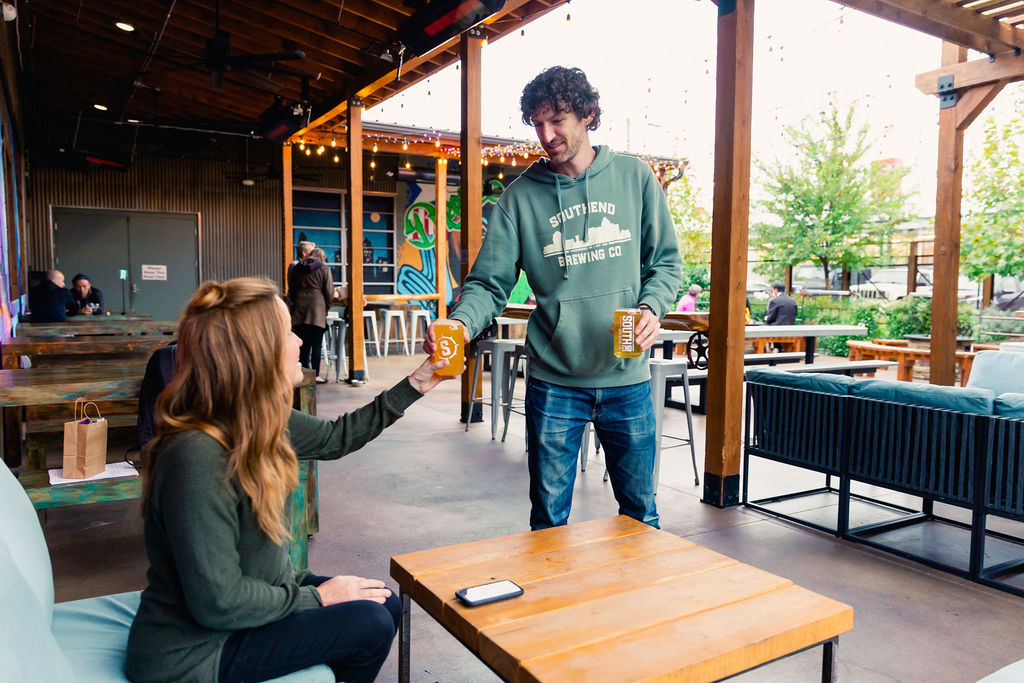The Taproom Manager’s Role in Ensuring High Quality Operations
If you aren’t using data for taproom success, you are missing out on an opportunity to stand out in a growing market.

In a recent conversation I had with a brewery owner, we were discussing how to use data to see greater taproom success. The brewery had just finished their first round of Secret Hops, and the owner wanted to know the best way to share the feedback with their team.
However, before we even approached the subject of sharing the results with their team, I stressed the importance of receiving buy-in from their Taproom Manager.
You can have all the data in the world at your fingertips, but if the person responsible for understanding and implementing it doesn’t support the initiative, it’s all for nought.
And the data supports this. Secret Hopper works with breweries nationwide and we see:
- Taprooms where the Manager and team get behind quality initiatives see higher tabs, higher tips, and more repeat customers.
- Taprooms where the Manager may not see the value in data or fails to dedicate the time to understand and use it, stay stagnant.
If you aren’t using data to see greater success in your taproom, you are missing out on an opportunity to stand out in an increasingly growing market.
Let’s begin by looking at the two major categories of data that Taproom Managers can use to ensure a high quality operation: numbers and experiential metrics.
Taproom Numbers To Track
First, numbers are vital, and should be one of your best friends. Understanding metrics such as average spend and number of total transactions give insight into where you stand, and where you can improve.
Some common and useful taproom numbers to track are revenue per barrel (BBL), sales growth percentage, and labor costs as a percentage of sales. Each of these helps to ensure high quality in different areas of your business: sales, customer service, and managing expenses.
Let’s break down each of these key metrics and provide an example of how you might use these in your taproom.
Revenue Per BBL
Simply put, this metric measures how well you are ‘monetizing’ each barrel of beer. Track this number on a monthly basis (total revenue divided by total barrels used in the taproom). Monitor the results each month and compare them to historical averages.
Is the revenue per barrel increasing? Decreasing? Use this key metric as a jumping off point to brainstorm ways to increase sales per barrel.
Sales Growth Percentage
Percentages are used as financial shorthand. They provide an easy way to summarize and communicate the financial goals of your taproom business. The sales growth percentage is calculated by taking the increase (or decrease) in sales from one period compared to another, and dividing it by the total sales in the previous period. Let’s use an example to illustrate:
- Sales in April 2022: $100,000
- Sales in April 2023: $110,000
- Sales increase: $10,000
- $10,000 / 100,000 = 10% sales growth percentage
This key metric is most useful when comparing the actual sales growth percentage to your budget, or forecasted sales.
Labor Hours as a percentage of sales
The largest expense in the taproom is almost always labor. It’s also the expense that may be most controllable by a Taproom Manager. To measure labor hours as a percentage of sales, take total labor hours in a given time period, and divide it by sales for that time period. Here’s an example:
- Labor hours in April 2023: $27,500
- Sales in April 2023: $110,000
- Labor hours as a percentage of sales = 25%
Data Detailing Guest Experiences
The second type, taproom data detailing guest experiences, gives you snapshots of what’s going on in your taproom, for better or worse. This non-financial data creates a baseline and allows you to monitor trends.
Are you collecting and using this data? If you’re just relying on numbers, then adding non-financial to your repertoire can help fortify your hold on understanding the taproom.
This data set can include everything from experiential metrics like “did a staff member offer recommendations?” to “did they encourage beer to go?”
It can even provide insight on the cleanliness of your establishment. While I hope this isn’t the situation anywhere, imagine the negative impact of a Taproom Manager who doesn’t support a clean taproom. The beauty of these non-financial metrics is that they can be customized to monitor the unique experience of any taproom.
These are metrics a brewery needs to be monitoring and taproom management must support the process to ensure high quality experiences. The taproom experience isn’t just about the guest. It’s about everyone who the taproom reaches: the guests, the staff, your management, your neighbors, your partners, everyone who is somehow impacted by your brewery’s taproom.
5 Ways A Taproom Manager Helps Ensure High Quality
- Understanding the importance of high quality (beer, staff, atmosphere, operation). A Taproom Manager must understand the importance of high quality on the overall success of a brewery.
- A desire to improve. A Taproom Manager must have a mindset of constant improvement and be capable of pinpointing areas needing improvement, or offering opportunity. This ties directly into motivation. If a Taproom Manager does not strive to be better, their team and taproom can easily become satisfied with being satisfactory – resulting in little gains.
- Training and education. We talk about improving all day long, but a Taproom Manager must create procedures that get their team on the same page, towards a common goal. A Manager can’t simply tell a team member to sell more pints, they must give them the tools to do so.
- By monitoring. Finding out where your taproom stands is the starting point, and then continuing to monitor the quality of experience is the ongoing effort. Taproom data isn’t a single snapshot. It’s a fluid painting. Sometimes it can start out beautiful, and quickly go south.
But, with the help of data and effort, it can go from a few colorful strokes to a taproom masterpiece. Metaphors aside, relying on taproom data can help you monitor consistency and quality day-to-day, and year-to-year.
- Recognition. Taproom data is a wonderful tool to see who is performing at a high-level, and a manager can see greater results by rewarding them because of it. Successfully motivating taproom staff can be accomplished through rewards, recognition, and opportunity. Moreover, if everyone is able to see the benefit from their efforts, this progress can also be motivating. Lastly, appreciation goes a long way and can help retain staff. Use the metrics you’ve decided upon, and take the time to make taproom staff feel valued.
The old business adage says: “What gets measured gets managed, and what gets managed gets improved.” This holds true in your taproom business. When you provide your Taproom Manager with training, support, and education around taproom data and key metrics, outcomes will improve and high quality results will be achieved.
And just like your taproom staff, it is also important to continually motivate a Taproom Manager to go above and beyond in their quest to achieve taproom goals.
By successfully ensuring high quality operations at your brewery, a Taproom Manager will create a culture of improvement, and ultimately build a more positive reputation for their brand.
ABOUT THE AUTHORS:

Andrew Coplon is the Founder of Secret Hopper and Craft Beer Professionals. Andrew helps breweries nationwide create more memorable and profitable taproom experiences using data-based insights gathered from thousands of visits. He has successfully built a community of 16,000 Craft Beer Professionals dedicated to the growth and betterment of our industry across the United States. When he isn’t building relationships on Zoom or meeting you for a pint, he enjoys climbing jungle gyms with his son, Max, or planning the next adventure with his wife, Stacie.

Kary Shumway is the founder of Craft Brewery Financial Training.com, an online resource for beer industry professionals. He has worked in the beer industry for more than 20 years as a certified public accountant and a chief financial officer for a beer distributor. He currently serves as CFO for Wormtown Brewery in Worcester, Massachusetts. Craft Brewery Financial Training publishes a weekly beer industry finance newsletter, offers online training courses on topics such as cash flow planning, financial forecasting, and brewery metrics. For more information visit www.CraftBreweryFinancialTraining.com.
Andrew and Kary have combined their forces as the Taproom Success Membership. Taproom Success gives you the tools, resources, and support you need to manage and grow your taproom business.
